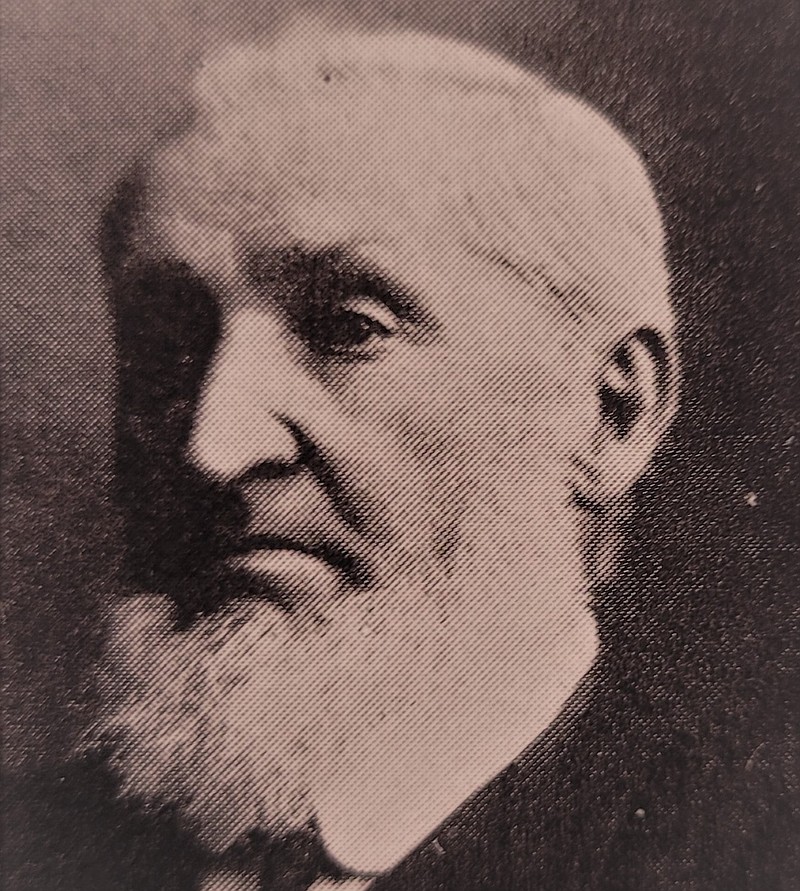During the 1840s, scores of hopeful individuals departed their German homeland in pursuit of the promise of a better life in the United States.
Many eventually settled in the community that in later years became known as Lohman, bringing with them their Lutheran faith and establishing a church "on the hill" that has weathered the decades and continues to serve a dedicated congregation.
"It was in the year 1852 that the desire to perpetuate the Lutheran faith brought together the heads of a number of emigrant families in the Stringtown area of west-central Cole County, Missouri," noted the History of St. Paul's Church in 1977.
The booklet further explained, "Residents of the area since the previous decade, these Bavarians, Westphalians, Saxons and Austrians, dreamed of the establishment of a real church, one in which the catechism could be taught, marriages and burials celebrated in a traditional manner, and in which their firmly held belief in Grace and Justification would find expression."
These families found assistance through the Rev. J.P. Kalb, who was at the time serving as pastor of Zion Lutheran Church near Jefferson City, in addition to providing spiritual guidance to several congregations in the outlying rural areas.
The new St. Paul's Evangelical Lutheran Church, part of the Missouri Synod, was organized following a meeting of several families in the home of the Plochberger family. The Rev. Carl W.R. Frederking was installed as pastor on April 28, 1852, serving in that capacity for the next three years.
Hardscrabble parishioners worked to erect the first church on the western slope of a hill overlooking that area that years later became Lohman. The first church structure, history notes, was of simple log construction that provided a spiritual home to the congregation for nearly two decades.
The latter part of the Civil War proved to be a trying period for the growing church since two of its members -- Friedrich Strobel and Erhardt Kautsch -- died from wounds received by Confederate troops under the command of Gen. Sterling Price near Stringtown on Oct. 8, 1864. Both were buried in the church cemetery.
"It was during these closing days of the Civil War that doctrinal disputes caused the separation of St. Paul's Church from membership in the Missouri Synod, and saw it join the Synod of Iowa," explained the 1977 church history booklet.
Several of the original members chose to break away from St. Paul's and, in 1867, organized St. John's Lutheran Church in nearby Stringtown, the latter congregation maintaining an association with the Missouri Synod.
In 1871, construction began on a new church building for St. Paul's -- a stone structure erected from materials quarried by members of the congregation. An important milestone in the church history came in late summer 1875 with the arrival of the Rev. George Fikenscher, who holds the distinction as the longest-serving pastor for the church.
Members of the congregation watched as a village grew up near the town with the advent of the railroad spur. The community soon earned the designation of Lohman in the early 1880s because of the post office established by businessman Charles W. Lohman.
During the nearly 30 years Fikenscher served St. Paul's, a schoolhouse was built along with a second parsonage. The school would later close with students receiving their education at either nearby Lohman School, or traveling to Jefferson City or Russellville.
Retiring from the ministry on Dec. 31, 1904, Fikenscher spent his remaining years in the Lohman area. The German native was 82 years old when he died in 1922 and is interred in the cemetery of St. Paul's Lutheran Church.
The year following Fikenscher's death, the decision was made to erect a new church.
"Gus Linsenbardt, who served as foreman for the construction of the church, says that the stone steeple from the original church was retained when the new church was built and that the steeple was covered with a brick veneer so that it would match the newly constructed brick church," the Daily Capital News reported July 30, 1977.
The newspaper added, "Within nine months, the church was completed and was officially dedicated on November 16, 1924."
Gus Fischer, a longtime member of the congregation at St. Paul's, was confirmed on April 9, 1952, and witnessed the transition from some of the traditional services at the church. Records indicate worship services were conducted entirely in German until the late 1920s.
"When I was real young, I can remember that there was a German service about once a month, but sometime around the late 1940s, that stopped entirely and they were done in English only," Fischer said. "Also, I remember we used to take communion about once a quarter, but now that is done every Sunday."
The same church building that has served the congregation since 1924 continues to provide a home for their fellowship and Sunday classes, although the building has undergone renovations and additions throughout the years.
The late Gertrude Strobel, who was 96 years old when she died in 2020, served in many capacities within the church, but was best known for being the organist since 1946. An ardent devotee to her Lutheran faith, she composed words of praise for the church's 100th anniversary celebration in 1952, awestruck by the longevity of the congregation established by her German forebearers.
"Loudly we sing, Loudly we sing,
As the organ rolls forth loud and strong,
With ever joyful hearts we thank our God,
So join in the everlasting song."
Jeremy P. Ämick is writing a series of articles about the Russellville area in honor of Missouri's bicentennial.


